Since 2014, the Syrian government has turned a mine-clearance vehicle into a tool for killing civilians and destroying civilian infrastructure in violation of the laws of war.
The UR-77 Meteorit (“UR-77”) is a self-propelled rocket launcher that has two explosive mine-clearance lines. Its analogue version, the UR-83P, is portable and can be mounted on a vehicle. Both versions remove minefields, booby traps, and improvised explosive devices (“IEDs”). To do so, they launch a rocket toward a minefield at a distance of up to 500 meters. The rocket is attached to a charged line, consisting of a hose filled with explosives that weighs approximately one ton. Explosions are powerful enough to detonate or disable mine fuses and leave a path of destruction approximately six meters wide by 80 to 90 meters long.
While demining is the conventional usage of these weapons, videos clearly show that Russia and now Syria have used UR-77s to kill civilians, inflict severe damage to swaths of land and to gut critical infrastructure.
During the Second Chechen War, for example, Russian Armed Forces used UR-77s to destroy an area along the Argun River during an operation against Chechen fighters. To do so, they launched rockets with mine-clearance lines, each containing an estimated 800kg of explosives. The explosions destroyed nearly three hectares and demolished the bridge.
UR-77s were also used to attack Chechen fighters stationed in the basements of residential buildings, such as in the village of Komsomolskoye where houses “were simply wiped from the face of the earth” during the attacks. The same tactic has been used by the Russian Armed Forces in Ukraine, including March 2022 attacks on Rubizhne.
As this report will show, UR-77s and UR-83Ps first appeared in Syria in 2014. A Dutch open-source intelligence group reported that the UR-77s were most likely sold to Syria by Russia or Belarus. At this time, they were used by the Syrian Armed Forces to gain control of opposition-held Jobar and strategically crush the opposition forces and prevent them from nearing Damascus.
However, as evidenced in the below incidents, civilians were often in the Syrian Government’s targets. In Syria, UR-77s and UR-83Ps were used indiscriminately in civilian areas with witnesses recalling how entire buildings were obliterated burying families with no hope of rescue. The impact of the strikes was a force that survivors had never felt before and left whole streets in rubble.
The indiscriminate nature of these attacks means it is nearly impossible to determine the number of Syrians killed by UR-77s. The use of these weapons was part of a broader campaign to recapture opposition-held areas and forcibly displace large swaths of the population. Years after these areas were decimated by UR-77s and UR-83Ps, many civilians were still unable to return to their neighborhoods which remained uninhabitable.
The continued usage of UR-77s and UR-83Ps demonstrate the extent to which Russian military tactics – prohibited by international humanitarian law – were adopted by the Syrian Armed Forces, resulting in civilian deaths, destruction of civilian infrastructure and the forcible transfer of the population.
Methodology
SJAC’s Open-Source Intelligence (OSINT) investigators combed through SJAC’s database, Bayanat gathering dozens of bulletins of documentation related to UR-77s, including testimonies, documents, and videos available on social media that were predominantly filmed by the Syrian Armed Forces themselves and used as propaganda.
Due to the nature of the weapons, videos of the attack can only be filmed from a safe distance. Thus, all video footage of the attacks in this report is filmed by the Syrian Armed Forces. SJAC nonetheless was able to authenticate the accuracy of these videos and confirm that they depict the deployment of these weapons. In this way, SJAC has been able to effectively use the propaganda videos as evidence of the crimes the government committed.
The continued usage of UR-77s and UR-83Ps demonstrate the extent to which Russian military tactics – prohibited by international humanitarian law – were adopted by the Syrian forces, resulting in civilian deaths and the forcible transfer of the population
The team thoroughly examined the technical capabilities of UR-77s and UR-83Ps in order to verify accounts provided by witnesses and images taken following an attack. After determining that an attack had taken place, the team used several techniques to pinpoint the timing of the attacks, the distance from which the attack was launched, and the exact location from where the attack was launched.
The team also determined that several videos had been edited in which case, additional resources were utilized to fill gaps in the incident. After verifying each attack, the investigators turned to social media, news reports, and UN reports to determine whether civilians were present in each incident.
To support the investigative work, SJAC’s documentation coordinators utilized their networks to identify and interview seven survivors and witnesses of attacks involving UR-77s and UR-83Ps. Their testimonies allowed SJAC to piece together the incidents below and verify both the use of the weapons and the presence of civilians during the attacks. As a witness to the use of mine clearance weapons in civilian areas, one of SJAC’s investigators provided a written statement detailing what he witnessed. SJAC’s investigation team independently reviewed the evidence and considered the investigator’s statement to be consistent with all available evidence.
In total, the OSINT investigators identified more than 30 attacks using UR-77s and UR-83Ps on 16 locations across Syria between 2014 and 2019. Some locations, such as Jobar, were attacked more than once. For 15 of these incidents, the investigators verified the target location using satellite imagery and geolocation tools. They determined that each incident occurred in residential neighborhoods where civilians were present in opposition-held territory. They also identified the perpetrator as the Syrian Armed Forces and resulted in widespread damage and civilian death.
SJAC selected four of the 15 incidents with the clearest visual evidence. Together, they show that the Syrian Armed Forces have utilized UR-77s and UR-83Ps indiscriminately for the purpose of killing and forcibly transferring civilians from the Damascus suburbs.
The Use of UR-77s and UR-83Ps across Syria
SJAC identified more than 30 UR-77 and UR-83P attacks across Syria between 2014 and 2018. SJAC cannot confirm the full details of violations, however, is making the list available to crowdsource further evidence and information.
Fighters in the Syrian Republican Guard used drones to film the campaign, including when mine-clearance lines were dropped on Al-Qaboun. One fighter published a propaganda video on Facebook in which he refers to UR-77s as the “Conqueror of the Militants”
SJAC hopes that this chart may be useful for witnesses, survivors, and other investigators who may have additional data to contribute to these incidents.
Incidents
1. Al-Qaboun – May 2017
The Syrian Armed Forces launched a three-month military campaign to reclaim Eastern Ghouta in February 2017. To support its ground offensive, the Syrian Armed Forces used rockets and heavy artillery to devastate defensive position and civilian areas. Ultimately, the Syrian Armed Forces took control of Eastern Ghouta in April 2018, relying heavily on indiscriminate attacks (including the use of chemical weapons), and contributing to mass displacement of more than 270,000 civilians. In Al-Qaboun, civilians faced dire consequences as their movement was limited and access to vital resources such as water and medical care were severely curbed. Satellite imagery shows the devastating impact of the campaign on the neighborhood of Al-Qaboun, eradicating entire neighborhoods.
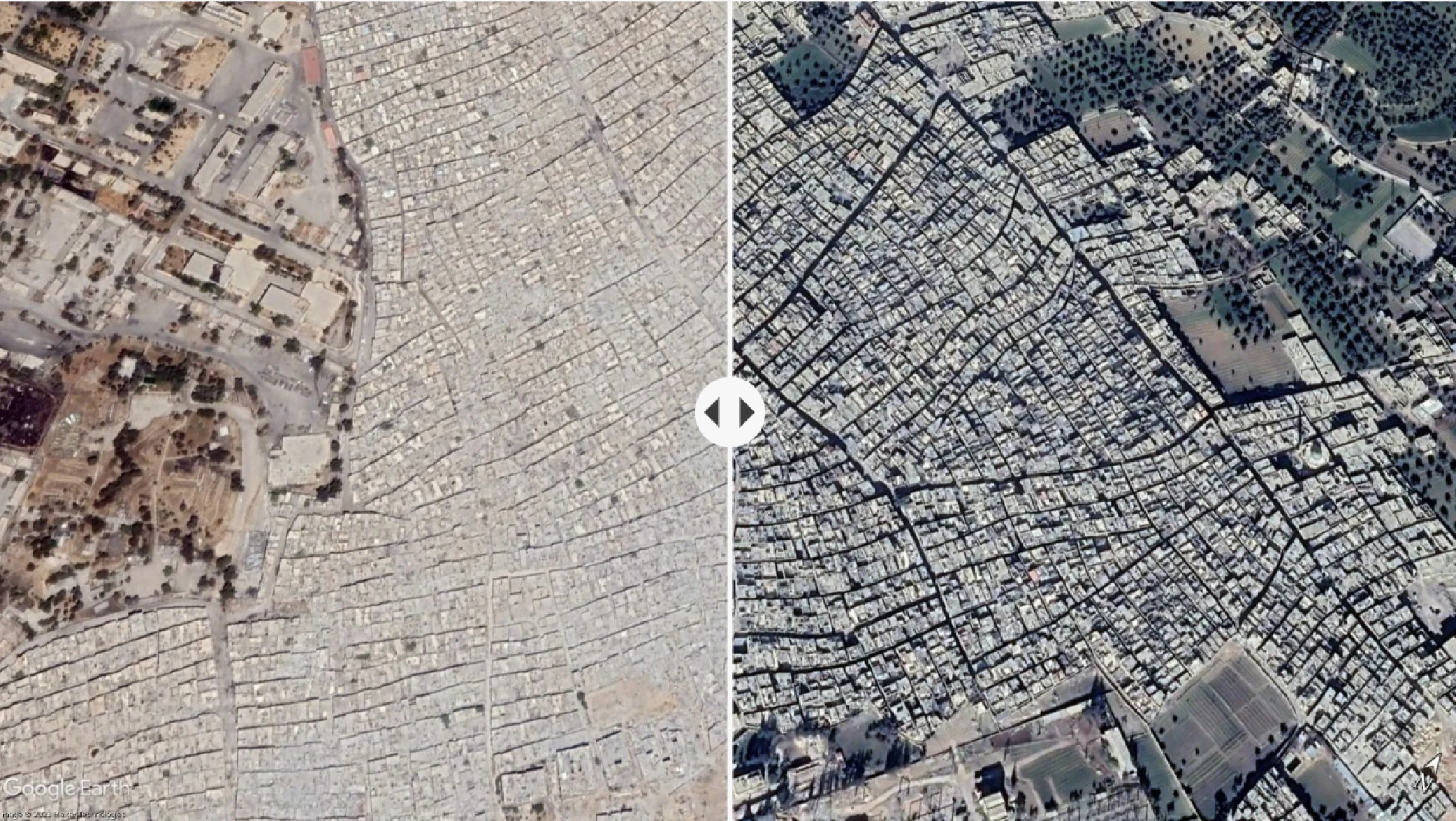
Destruction in North Qaboun 22/01/2017 to 02/07/2017
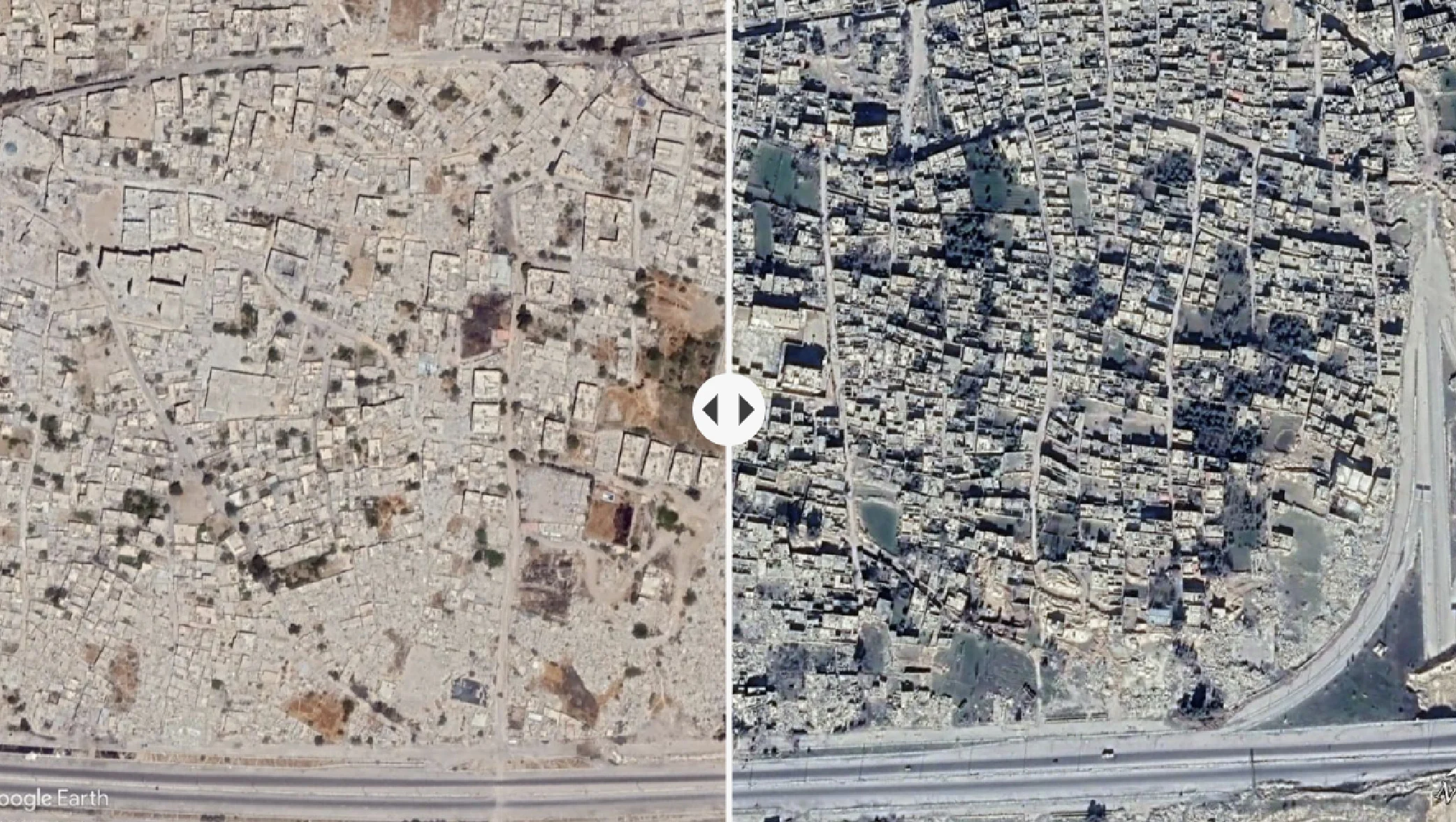
Destruction in South Qaboun 22/01/2017 to 02/07/2017
Fighters in the Syrian Republican Guard used drones to film the campaign, including when mine-clearance lines were dropped on Al-Qaboun. One such fighter was Wissam Ismail (Wissam Al-Tair) who served in the Republican Guard from 2010-2018. In July 2017, Wissam Ismail published a propaganda video on Facebook in which he refers to UR-77s as the “Conqueror of the Militants.” The video documents three attacks in which UR-77s were used to strike separate targets. The mine-clearance lines fell on buildings in a residential area, causing massive explosions.
To read the rest of the report supported by photos and videos, click here.
Raseef22 is a not for profit entity. Our focus is on quality journalism. Every contribution to the NasRaseef membership goes directly towards journalism production. We stand independent, not accepting corporate sponsorships, sponsored content or political funding.
Support our mission to keep Raseef22 available to all readers by clicking here!
Interested in writing with us? Check our pitch process here!
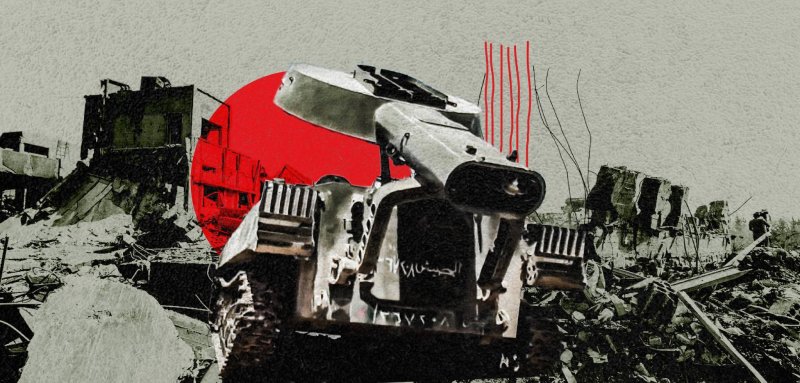
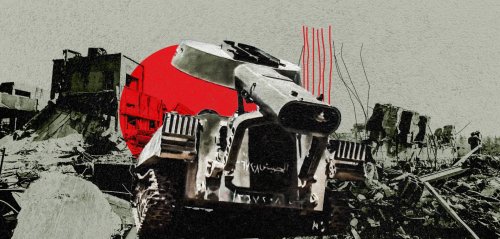


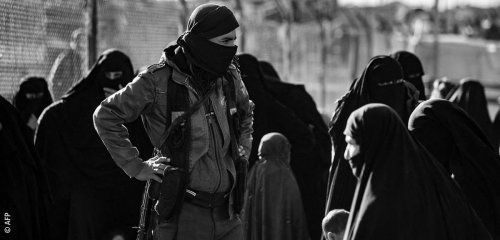



Join the Conversation
ذوالفقار عباس -
5 minutes agoا
Hossam Sami -
58 minutes agoصعود "أحزاب اليمين" نتيجة طبيعية جداً لرفض البعض; وعددهم ليس بالقليل أبداً. لفكرة الإندماج بل...
Anonymous user -
1 day agoرائع و عظيم ..
جيسيكا ملو فالنتاين -
5 days agoزاوية الموضوع لطيفة وتستحق التفكير إلا أنك حجبت عن المرأة أدوارا مهمة تلعبها في العائلة والمجتمع...
Bosaina Sharba -
1 week agoحلو الAudio
شكرا لالكن
رومان حداد -
1 week agoالتحليل عميق، رغم بساطته، شفاف كروح وممتلء كعقل، سأشاهد الفيلم ولكن ما أخشاه أن يكون التحليل أعمق...